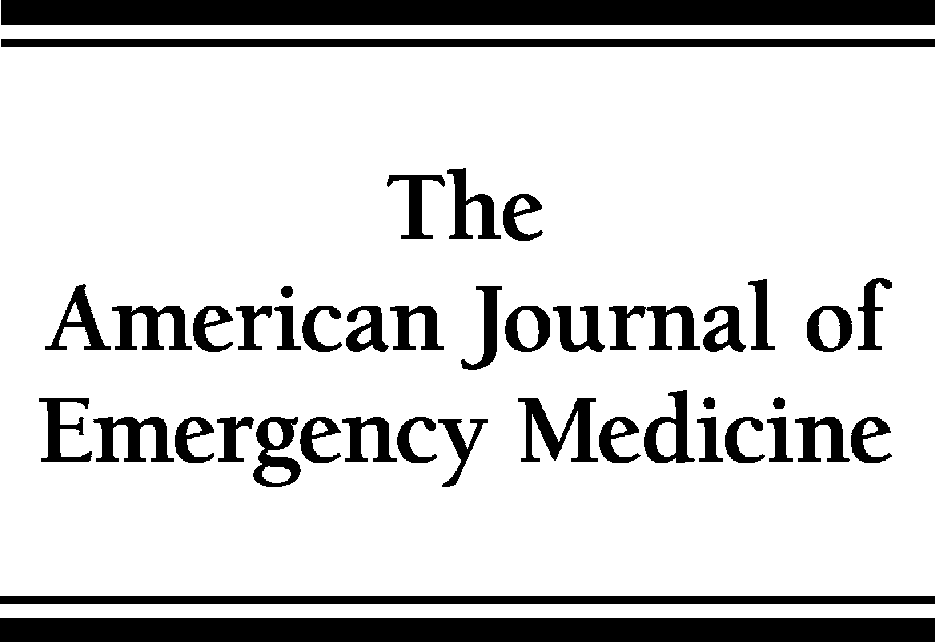Alcohol, bicycling, and head and brain injury: a study of impaired cyclists’ riding patterns R1
Brief Report

Alcohol, bicycling, and head and brain injury: a study of impaired cyclists’ riding patterns R1
Patrick Crocker DO b, Omid Zad MD a, Truman Milling MD a,?, Karla A. Lawson PhD b
aUniversity Medical Center at Brackenridge, Austin, TX 78731, USA
bDell Children’s Medical Center of Central Texas, Austin, TX 78723, USA
Received 8 August 2008; revised 3 September 2008; accepted 3 September 2008
Abstract
Objective: The aim of the study was to examine the interactions between alcohol, bicycle helmet use, experience level, riding environment, head and brain injury, insurance status, and hospital charges in a medium-sized city without an adult helmet law.
Methods: A study of adult bicycle accident victims presenting to a regional trauma center over a 1-year period was undertaken. Data were collected at the bedside regarding helmet use, alcohol use, experience level, location and type of accident and prevailing vehicle speed (for road accidents), and presence and degree of head or brain injury.
Results: Two hundred patients 18 years or older were enrolled from December 2006 through November 2007. Alcohol use showed a strong correlation with head injury (odds ratio, 3.23; 95% confidence interval, 1.57-6.63; P = .001). Impaired riders were less experienced, less likely to have medical insurance, rarely wore helmets, were more likely to ride at night and in slower speed zones such as city streets, and their hospital charges were double (all P values b.05).
Conclusions: Alcohol use leads to a host of unsafe bicycling practices, increased head and brain injuries, and costs to the cyclist and community. The interrelated characteristics of the riding patterns of the cyclists who use alcohol might help target interventions.
(C) 2010
Introduction
The National Safety Council estimates that 35.6 million Americans ride bicycles [1]. About 480 000 of those end up in emergency departments for injuries, and 20 000 are admitted to the hospital [1,2]. Head injury accounts for about a third of bicycle-related injuries, and these victims are more likely to die
* Corresponding author.
E-mail address: tjmilling@yahoo.com (T. Milling).
[3]. Those that survive have more long-term sequela [3]. However, the riding habits, experience level, and riding environment of riders who have been drinking alcohol have not been fully characterized. Understanding when, where, and how these cyclists come to be head-injured has important implica- tions for public safety campaigns targeting interventions to reduce morbidity and mortality from bicycle accidents.
Our goal was to study a group of bicycle accident victims presenting to a regional trauma center and examine which characteristics correlated with alcohol use and head and/or brain injury.
0735-6757/$ - see front matter (C) 2010 doi:10.1016/j.ajem.2008.09.011
Methods
This was a consecutive cross-sectional study of all bicycle accidents involving adults (18 years or older) presenting to a
regional trauma center from December 1, 2006, to November 30, 2007. By community standard, ambulances bring all patients with more than trivial traumatic injury to this hospital. The hospital is level II per the American College of
Table 1 Characteristics of study subjects according to injury status
|
Characteristics
|
No head Injury |
Head injury a |
P b |
|
No. of patients |
126 |
72 |
|
|
Mean age (y)-0 missing |
34.5 +- 16.6 |
36.3 +- 13.9 |
.34 |
|
Male (%)-0 missing |
103 (81.8) |
56 (77.8) |
.50/.58 |
|
Skill level (%)-32 missing |
|||
|
Beginner |
12 (11.2) |
8 (13.6) |
.40/.41 |
|
Intermediate |
53 (49.5) |
34 (57.6) |
|
|
Expert |
42 (39.3) |
17 (28.8) |
|
|
Helmet use (%)-7 missing |
|||
|
Yes |
48 (40.0) |
22 (31.0) |
.21/.22 |
|
No |
72 (60.0) |
49 (69.0) |
|
|
Accident type (%)-3 missing |
|||
|
Single Bike |
71 (56.8) |
46 (65.7) |
.37/.35 |
|
Bike vs auto |
50 (40.0) |
21 (30.0) |
|
|
Bike vs bike |
4 (3.2) |
3 (4.3) |
|
|
Alcohol use (%)-9 missing |
|||
|
Yes |
17 (13.9) |
23 (34.3) |
.001/.001 |
|
No |
105 (86.1) |
44 (65.7) |
|
|
Road conditions (%)-23 missing |
|||
|
Dry |
96 (87.3) |
60 (92.3) |
.30/.45 |
|
Wet |
14 (12.7) |
5 (7.7) |
|
|
Disposition-0 missing |
|||
|
Discharged from ED |
114 (90.5) |
50 (69.4) |
.001/b.001 |
|
Admitted |
11 (8.7) |
21 (29.2) |
|
|
Eloped |
1 (0.79) |
1 (1.4) |
|
|
Mean hospital charges ($)-1 missing |
5,247 +- 7,375 |
17,537 +- 36,751 |
.0004 |
|
Location (%)-17 missing |
|||
|
Street |
88 (77.2) |
52 (77.6) |
.97/.98 |
|
Off-road |
7 (6.1) |
3 (4.5) |
|
|
Developed trail |
10 (8.8) |
6 (9.0) |
|
|
Highway |
9 (7.9) |
6 (9.0) |
|
|
Speed limit at location (%)-55 missing |
|||
|
0-25 mph |
32 (35.2) |
23 (44.2) |
.56/.57 |
|
26-45 mph |
49 (54.9) |
24 (46.2) |
|
|
46-65 mph |
10 (11.0) |
5 (9.6) |
|
|
Weather conditions (%)-5 missing |
|||
|
Clear |
88 (72.7) |
55 (76.4) |
.48/.58 |
|
Cloudy |
27 (22.3) |
14 (19.4) |
|
|
Rainy |
6 (5.0) |
2 (2.8) |
|
|
Foggy |
0 (0.0) |
1 (1.4) |
|
|
Time of accident (%) |
|||
|
05:01 AM-09:00 am |
12 (10.1) |
6 (8.5) |
.76/.79 |
|
09:01 AM-04:00 pm |
44 (37.0) |
22 (31.0) |
|
|
04:01 PM-08:00 pm |
36 (30.3) |
23 (32.4) |
|
|
08:01 PM-05:00 am |
27 (22.7) |
20 (28.2) |
|
|
Insurance status-0 missing |
|||
|
None or assistance insurance c |
73 (57.9) |
35 (48.6) |
.21/.24 |
|
Private insurance |
53 (42.1) |
37 (51.4) |
|
|
a Head injury was defined as any minor (headaches and concussions), mild (GCS score 13-15), moderate (GCS score 9-12), or severe brain injury (GCS score <=8). b Group means and frequencies were compared by 2-sided Student t tests or by ?2 tests/Fisher exact test, respectively. Statistical significance was set at P b .05. c Medicaid (n = 3), Medicare (n = 4), county or state medical assistance program (n = 13), and self-pay/uninsured (n = 88). |
|||
Surgeons, although it is the only trauma center serving an 11-county region anchored by a medium-sized city (greater metropolitan area population 1.2 million), and it sees 80 000 patients per year. The protocol was approved by the Brackenridge Hospital Institutional Review Board.
Data collection was performed at the bedside by a nurse and/or study coordinator. Prospectively defined data points were helmet use, type of helmet, skill level (self-described), accident type, alcohol use immediately before or during ride (self-reported in conscious patients and confirmed with serum alcohol level in conscious and unconscious), road type, street address, weather conditions, time, type of
bicycle, and head or brain injury. Head injury was defined as any injury to scalp or skull. Brain injury was defined by Glasgow Coma Scale (GCS) score: mild, 13-15; moderate, 9- 12; severe, 8 or less. Mild brain injuries with GCS score of 15 were defined as those who required a head CT in the opinion of the treating physician (such as for prolonged loss of consciousness before arrival). Hospital charges were culled from a finance database. Data were entered into a Microsoft Excel worksheet and imported into STATA. Statistical analysis was performed using the Student t test for continuous variables and ?2 and/or Fisher exact test for categorical analysis and reported with P values, for which
Table 2 Serum ETOH level, head/brain injury, and hospital charge for 40 patients who used alcohol
|
ID
|
Age (y) |
Serum ETOH (mg/dL) |
Injury |
Disposition |
Hospital charge ($) |
|
7 |
47 |
SR |
No injury |
Admitted |
47 643 |
|
31 |
36 |
SR |
Head injury |
Discharged |
1725 |
|
33 |
34 |
373 |
Head injury |
Discharged |
20 941 |
|
40 |
46 |
327 |
No injury |
Discharged |
11 547 |
|
44 |
40 |
182 |
No injury |
Admitted |
22 680 |
|
45 |
44 |
274 |
Head injury |
Discharged |
8371 |
|
50 |
61 |
SR |
Head injury |
Discharged |
3303 |
|
56 |
50 |
SR |
No injury |
Discharged |
4772 |
|
60 |
59 |
146 |
Severe brain injury |
Admitted |
181 839 |
|
67 |
23 |
SR |
No injury |
Discharged |
2569 |
|
71 |
23 |
227 |
Head injury |
Discharged |
297 |
|
91 |
20 |
SR |
Head injury |
Discharged |
8429 |
|
92 |
30 |
SR |
Head injury |
Discharged |
2460 |
|
95 |
35 |
SR |
No injury |
Discharged |
2212 |
|
97 |
46 |
SR |
No injury |
Discharged |
5139 |
|
102 |
27 |
SR |
Head injury |
Discharged |
12 399 |
|
106 |
36 |
SR |
Head injury |
Discharged |
9772 |
|
110 |
33 |
302 |
Mild brain injury |
Discharged |
6607 |
|
111 |
28 |
SR |
Head injury |
Discharged |
6658 |
|
112 |
26 |
296 |
Mild brain injury |
Admitted |
17 652 |
|
118 |
44 |
321 |
No injury |
Discharged |
803 |
|
120 |
41 |
SR |
No injury |
Discharged |
857 |
|
129 |
44 |
SR |
No injury |
Discharged |
7909 |
|
133 |
25 |
SR |
Head injury |
Discharged |
2370 |
|
135 |
24 |
SR |
Head injury |
Discharged |
1364 |
|
137 |
27 |
285 |
Severe brain injury |
Admitted |
105 961 |
|
139 |
25 |
SR |
No injury |
Discharged |
5093 |
|
142 |
25 |
275 |
Mild brain injury |
Discharged |
5904 |
|
148 |
24 |
45 |
Mild brain injury |
Admitted |
35 948 |
|
149 |
48 |
112 |
Mild brain injury |
Discharged |
8876 |
|
161 |
48 |
SR |
No injury |
Discharged |
9685 |
|
162 |
46 |
167 |
No injury |
Discharged |
9341 |
|
163 |
32 |
SR |
Head injury |
Discharged |
1496 |
|
184 |
24 |
SR |
No injury |
Discharged |
1140 |
|
186 a |
55 |
SR |
Head injury |
Admitted |
6239 |
|
192 |
57 |
SR |
No injury |
Discharged |
1372 |
|
193 |
22 |
SR |
Head injury |
Discharged |
1108 |
|
198 |
26 |
159 |
Head injury |
Discharged |
7956 |
|
205 |
50 |
SR |
No injury |
Discharged |
600 |
|
213 |
32 |
SR |
No injury |
Discharged |
1940 |
|
SR indicates self-report. a The only patient with helmet in alcohol use group. |
|||||
.05 or less was considered significant. Univariate logistic regression was used to determine the odds of head/brain injury in those who did and did not use alcohol.

Table 3 Characteristics of study subjects according to alcohol use
|
Characteristics |
Using alcohol |
P a |
|
|
Yes |
No |
||
|
No. of patients |
40 |
150 |
|
|
Mean age (y) |
36.6 +- 11.7 |
34.8 +- 12.6 |
.41 |
|
Male (%) |
32 (80.0) |
120 (80.0) |
1.00 |
|
Skill level (%) Beginner |
4 (12.1) |
16 (11.9) |
.016 |
|
Intermediate |
24 (72.7) |
63 (47.0) |
|
|
Expert |
5 (15.2) |
55 (41.0) |
|
|
Head injury (%) Yes 17 (42.5) 105 (70.5) .001 No 23 (57.5) 44 (29.5) Accident type (%) |
|||
|
Single bike |
26 (66.7) |
86 (57.7) |
.59 |
|
Bike vs auto |
12 (30.8) |
57 (38.3) |
|
|
Bike vs bike |
1 (2.6) |
6 (4.0) |
|
|
Helmet (%) Yes |
1 (2.6) |
65 (44.2) |
b.0001 |
|
No Road conditions (%) |
38 (97.4) |
82 (55.8) |
|
Results
A total of 200 patients were enrolled during the study period. Information on helmet use was available in all but 8 (4%) riders and alcohol use in all but 10 (5%). Head injury data were unavailable for 2 patients (1.0%).
Median age was 32 (range, 18-67), and the population was 19.5% female.
Seventy-two patients had a head or brain injury (52 head injury; 17 mild brain injury; 1 moderate brain injury; 2 severe brain injury).
The subjects were divided by head or brain injury and the degree thereof, and variables were examined for their correlation thereto (see Table 1). Alcohol use showed the strongest association in logistic regression modeling (odds ratio, 3.23; 95% confidence interval, 1.57-6.63; P b .001).
|
There were 40 riders who consumed alcohol. Serum alcohol |
Dry |
28 (77.8) |
125 (91.2) |
.025 |
|
levels were available in 15 patients. All but 1 of those were |
Wet |
8 (22.2) |
12 (8.8) |
|
|
above 80 mg/dL, the state legal limit for driving a car. Twenty- |
Disposition |
|||
|
five patients reported alcohol use at the bedside (see Table 2). |
Discharged from ED |
33 (82.5) |
124 (82.7) |
.75 |
|
The cohort of riders who used alcohol was then examined for correlating characteristics (see Table 3). |
Admitted Eloped |
7 (17.5) 0 (0.0) |
24 (16.0) 2 (1.3) |
Limitations
|
Mean hospital charges ($) Location (%) Street |
14,825 +- 32,631 38 (97.4) |
7,059 +- 9,118 101 (72.1) |
.011 .009 |
|
Off-road |
0 (0.0) |
10 (7.1) |
|
|
Developed trail |
1 (2.6) |
14 (10.0) |
|
|
Highway |
0 (0.0) |
15 (10.7) |
|
|
Speed limit at location (%) 0-25 mph 19 (55.9) 36 (33.6) .015 26-45 mph 15 (44.1) 56 (52.3) 46-65 mph 0 (1.0) 15 (14.0) Weather conditions (%) |
|||
|
Clear |
26 (68.4) |
114 (77.0) |
.17 |
|
Cloudy |
8 (21.1) |
29 (19.6) |
|
|
Rainy |
4 (10.5) |
5 (3.4) |
|
|
Time of accident (%) 05:01 AM-09:00 am |
1 (2.6) |
15 (10.3) |
b.0001 |
|
09:01 AM-04:00 pm |
3 (7.7) |
60 (41.4) |
|
|
04:01 PM-08:00 pm |
11 (28.2) |
46 (31.7) |
|
|
08:01 PM-05:00 am |
24 (61.5) |
24 (16.6) |
|
|
Insurance status None or assistance 30 (75) 73 (48.7) .003 insurance Private insurance 10 (25%) 77 (51.3) a Means and frequencies were compared by 2-sided Student t tests and ?2 tests, respectively. Statistical significance was set at P b .05. |
|||
In an analysis of this many variables, it is always possible that some statistically significant correlations will be found by chance. We believe that the strength of the correlations and the fact that these variables were chosen for previously reported significance or high clinical relevance mitigate against this possibility. Also, hospital charges are not formal costs and represent only a rough estimate of the economic impact of acute care in a bicycle accident. In addition, because alcohol use was partially examined by self-report, some patients may have been missed and categorized as non-alcohol using. Finally, GCS is a measure of level of consciousness and only an indirect assessment of brain injury, although all 3 patients with moderate to severe brain injury defined by GCS had CT findings of brain injury as well. The treating physician’s assessment that a patient needed a CT is also somewhat subjective but was the best available marker for a clinical determination of severity.
Discussion
There have been several reports on the link between alcohol use, helmet non-use, and bicycling injury [4-10].
Prior research indicates that riding a bicycle is a much more complex psychomotor task than driving a car, and alcohol has a greater negative impact on riding abilities than driving
abilities [11,12]. Our data showing a more than tripled risk of head/brain injury support this finding.
A well-designed analysis from Maryland found a similar odds ratio (5.6) for any injury in riders under the influence of alcohol, but the study specifically excluded enrollment at night out of concern for the safety of researchers enrolling controls [13], although 2 prior reports found that nighttime riders are more likely to be impaired [4,8]. These retro- spective reports also found a strong correlation between alcohol and bicycling injury. Another report from Sweden using telephone interviews attempted to characterize alcohol use and riders’ environment in Goteborg, that nation’s second largest city (population 500 000) [10], but these data are difficult to extrapolate to American cities because of likely differences in riding and driving patterns. No detailed, prospective report has been published fully describing where alcohol-using bicyclists are likely to ride and thus where interventions targeted at reducing drunken riding are most likely to succeed.
From our data, a number of strong associations arise with riders who use alcohol. Only 1 of the 40 riders wore a helmet. Local laws require only riders younger than 18 years to wear one, and Texas has no state law. Only 21 states and the District of Columbia have state laws, all applying to minors only, although there exists a patchwork of 186 local laws, some applying to adults, in many states [14]. (The Bicycle Helmet Safety Institute publishes a yearly review of helmets meeting impact safety criteria [14], and it identified the Bell Citi model as one of the safest and best value.)
Impaired riders were less experienced by self report, impervious to adverse road conditions and unlikely to have medical insurance, leaving society to bear the financial burden of their care. With rare exception, they rode in the evening or at night on city streets with speed limits less than 45 mph. Under local laws, impaired cyclists can only be arrested for public intoxication and not the more serious charge of driving while intoxicated. Our data support a call for national and/or state legislation specifically addressing cycling while intoxicated and imposing much stronger penalties for this hazardous activity. Although our data set did not find significance in relative risk of cycling without helmet (most likely due to small sample size), it did show a trend consistent with previous studies that form an over- whelming body of evidence that helmets prevent injuries and save lives, and laws should be passed to encourage cyclists to wear helmets.
Conclusion
Riders who use alcohol appear to exhibit predictable and unsafe riding patterns in this mid-sized American city, and, confirming prior reports, are much more likely to have head or brain injury, lack medical insurance, and generate increased hospital charges. Awareness of these interrelated characteristics may lead to more successful interventions.
References
- National Safety Council. Injury facts. Washington (DC): National Safety Council; 2008. p. 130.
- Baker SP, Li G, Fowler C, Dannenberg AL. Injuries to bicyclists: a national perspective. Baltimore (Md): The Johns Hopkins Injury Prevention Center; 1993.
- Kraus JF, Fife D, Conroy C. Incidence, severity and outcomes of brain injuries involving bicycles. Am J Public Health 1986;77:76.
- Li G, Baker SP. Alcohol in fatally injured bicyclists. Accid Anal Prev 1994;26:543-8.
- Spaite DW, Criss EA, Weiss DJ, Valenzuela TD, Judkins D, Meislin HW. A prospective investigation of the impact of alcohol consumption on helmet use, injury severity, medical resource utilization, and health care costs in bicycle-related trauma. J Trauma 1995;38:287-90.
- Frank E, Frankel P, Mullins RJ, Taylor N. Injuries resulting from bicycle collisions. Acad Emerg Med 1995;2:200-3.
- Yelon JA, Harrigan N, Evans JT. Bicycle trauma: a five-year experience. Am Surg 1995;61:202-5.
- Li G, Baker SP, Sterling S, et al. A comparative analysis of alcohol in fatal and nonfatal bicycling injuries. Alcohol Clin Exp Res 1996;20: 1553-9.
- Olkkonen S, Honkanen R. The role of alcohol in nonfatal bicycle injuries. Accid Anal Prev 1994;22:89-96.
- Anderssen A, Bukertorp O. Cycling and alcohol. Injury Int J Care Injured 2002;33:467-71.
- Schewe G, Englert L, Ludwig O, et al. Untersuchungen uber Alkoholbedingte Leistungseinbuben bei Fahrrad- und Mofa- Fahrren (Examining the influence of alcohol on the performance of bicyclists and Mofa-riders). Beitr Gerichtl Med 1978;36: 239-46.
- Schewe G, Knoss HP, Ludwig O, et al. Experimental studies on the question of the marginal value of alcohol-induced unfitness to operate a vehicle in the case of bicyclists. Blutalkohol 1984;21: 97-109.
- Li G, Baker SP, Smialek J, et al. Use of alcohol as a risk factor for bicycling injury. JAMA 2001;285:893-6.
- Bicycle Helmet Safety Institute. Helmet laws for bicycle riders: a summary. BHSI, Retrieved from the Internet at www.helmets.org (Sept. 1, 2008).


